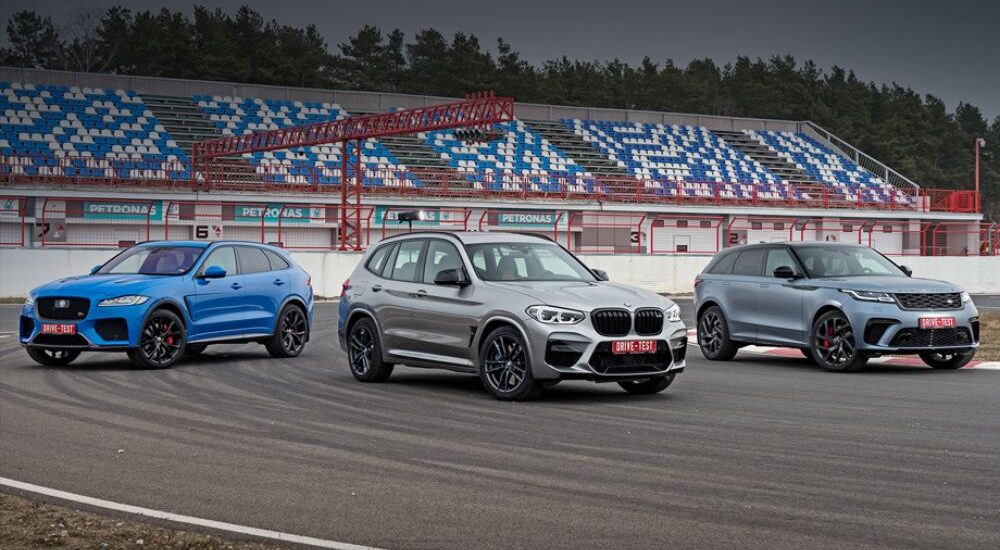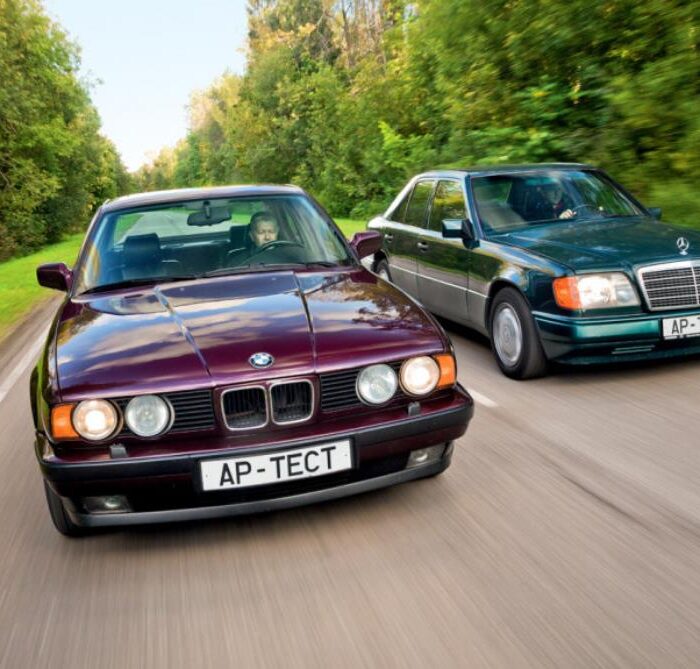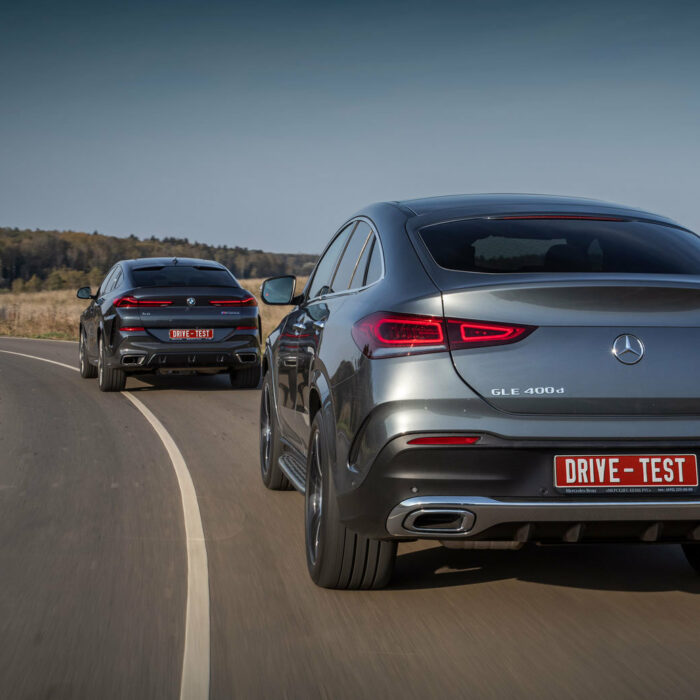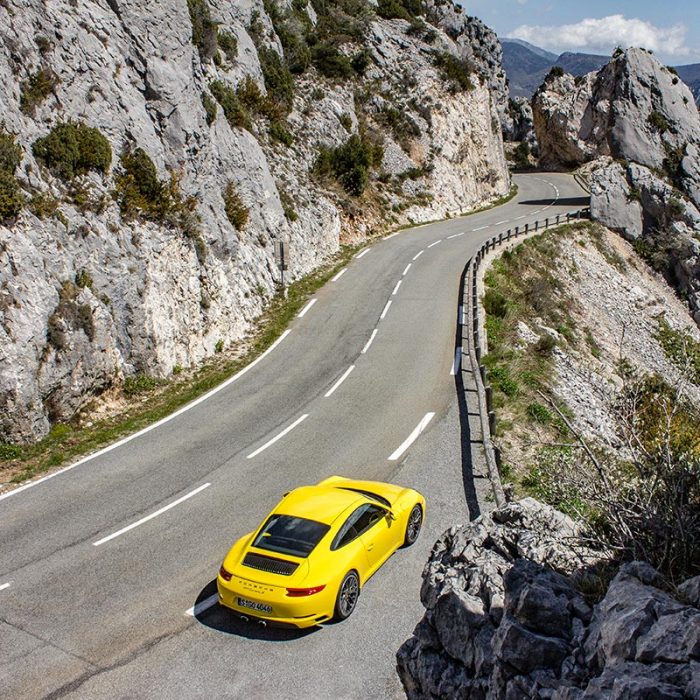Accelerating the BMW X3 M, Jaguar F-Pace SVR and Range Rover Velar with V8
The two sports crossovers in this test have the same engines, despite some price differences. Based on the same platform, the Jaguar F-Pace SVR and Range Rover Velar SVAutobiography Dynamic Edition use a five-liter V8 with a 550 hp supercharger. At that point, it was produced at the Ford plant in Bridgend, Wales. However, in the fall of 2020, the contract for the supply of engines to the British expired, and the enterprise was closed. Perhaps the era of eight-cylinder “compressor” Jaguars and Ranges ends. Hot “British” can switch to six-cylinder thrust. And the already familiar BMW X3 M clearly demonstrates that this is not the end of the world.
The lightest in the trio, the 510-horsepower BMW picks up 60 mph in the same 4.3 seconds as the more powerful SVR with a handicap of almost a centner. The Range Rover is just as much heavier than the Jaguar and takes four and a half seconds to accelerate. Thus, the English cars with one driver and on winter tires are able to confirm passport data, and the X3 M does not seem to get a couple of tenths.
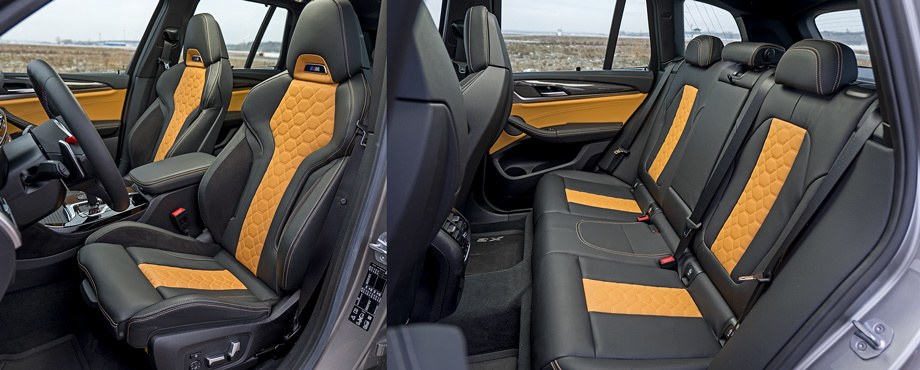
But let’s not be strict. Firstly, German cars are traditionally sensitive to non-standard tires: in this case, winter ones are also narrower than standard ones. Secondly, there are so many powertrain settings that you can combine them all day long. I admit that the sport program we have chosen is not the most effective. One way or another, the measurement results show that in this case the number of cylinders does not particularly affect the speed.
If you remove the measuring device from the windshield and trust the feelings, then the SVR seems to be the most dynamic. On acceleration, it makes the strongest impression. Gaining revs, the V8 gurgles violently, when changing gears, it grunts loudly, and when the gas is released, it shoots metal from the muffler. The howl of the drive supercharger hides behind other sounds. It is the soundtrack that gives the acceleration a slight shade of madness. There is something narcotic in this, forcing you to put pressure on the gas, even when it is not particularly required. It seems that the driver’s reciprocal enthusiasm adds strength to the Jaguar: it comes first in the drag. If the transition to six cylinders is inevitable, then I’m already starting to miss this growl.
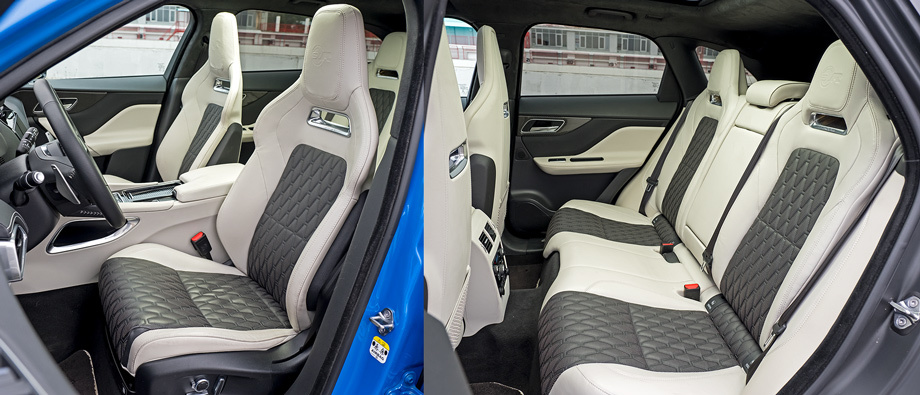
Velar sounds a little more modest, but also quite dashing. Especially against the backdrop of BMW, the dull release of which seems almost synthetic. All exhaust systems are equipped with bypass valves, allowing you to add drama if necessary. But if the X3 M remembers the selected damper position even after a restart, then SVR and SVA (I allow myself such an abbreviation) go to a lower tone at the first opportunity. For example, when changing the driving mode.
The key difference between the three crossovers comes down to the fact that in the “British” it excites the very process of acceleration, and in BMW it is its result: you see, it’s already ninety mph on the speedometer! The German car hides the speed, while the opponents seem to stick it out. And make driving on public roads more interesting. And comfortable — especially when it comes to SVA. Its air suspension is stiffer than that of a regular Velar, but compared to the pinched M, the Range seems to be an absolutely civilian car.
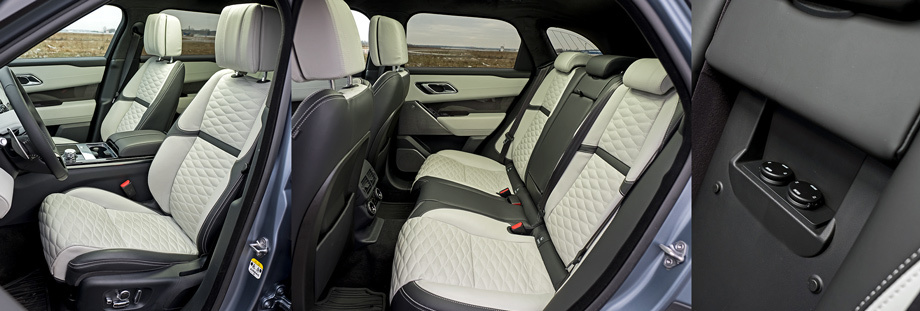
Velar is not so sensitive to minor road defects, it completely ignores the short wave, although it notes transverse irregularities with too noticeable fluctuations in unsprung masses. I’m afraid to imagine how much 22-inch wheels weigh… Even in the sport mode, the Velar chassis retains acceptable smoothness, however, this program does not fit well with the imposing nature of the car.
The Jaguar doesn’t have air suspension, and stiffer springs make the SVR even more bumpy than a regular F-Pace. In dynamic mode, there is almost no smooth ride. Anything that gets under the wheels makes the car bounce. The multimedia system allows you to refine the settings: to abandon the excessive severity of the shock absorbers, leaving the engine, gearbox and electric amplifier in the “Sport”. But I wouldn’t take the steering wheel out of Comfort mode either: the control accuracy does not suffer from this, and it’s easier to turn the steering wheel.
I don’t feel a fundamental difference between the Sport and Sport Plus programs in the M: both of them are extremely uncomfortable. Like the Jaguar, the BMW bounces over the smallest bumps, and the level of vertical acceleration increases so much that it seems as if the car is skipping. But you change Sport to Comfort and — bliss! The M is harsh, but not cruel. Another thing is the track. In this case, we use the flat, recently laid track in Myachkovo not as a racing ring, but as a testing ground for handling at the limit. Here, a wicked sport mode forces the X3 M to pull itself together and attack corners in a way that won’t catch you.
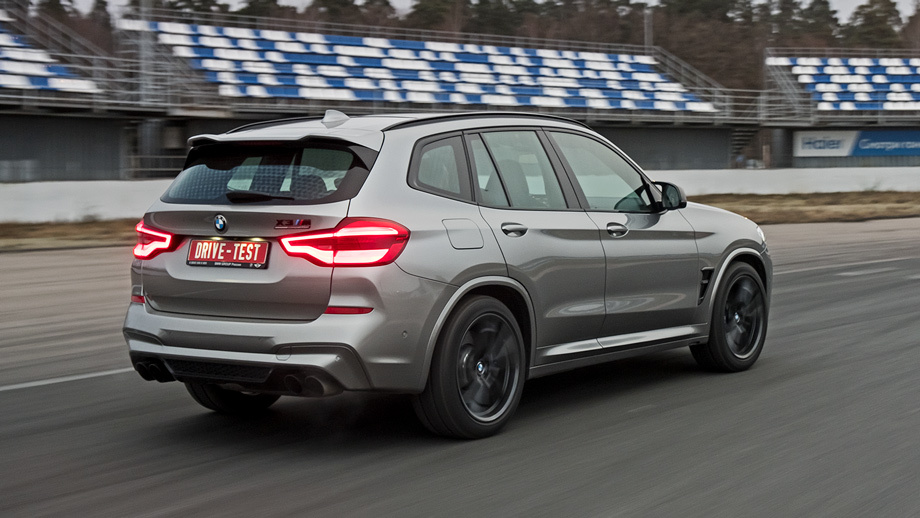
Yes, rolls are noticeable, but they do not interfere with active driving too much. Yes, the BMW pulls its muzzle out of the turn too early, and under the release of gas it goes into a skid a little prematurely. However, these processes develop gradually, leaving time for an accurate assessment and correction. Here, too, it is better to free the electric amplifier from the excessive viscosity of the sport mode. Then a light, moderately sharp (2.2 turns from lock to lock) steering wheel with a plump rim pleases with reliable feedback and a distinct change in effort depending on the angle and load.
And this despite the fact that the chassis is operating in an abnormal mode: instead of tires of different widths 255/40 R21 in front and 265/40 R21 in the rear, 255/45 R20 are installed on our car “in a circle”. In addition, the Pirelli Scorpion Winter friction model itself does not stand out on dry, cold pavement. But it’s easier to enjoy power slides with the 4WD Sport mode. Distributing traction, it gives priority to the rear axle, where the M-differential with electronically controlled blocking is working with might and main. Spectacular! And it’s easier to manage the skid than any of the competitors.
The “British”, also equipped with smart differentials, do not have such a frivolous transmission program, and, despite the scrap traction, both are reluctant to drift under the gas. At least, on dry road. To be sure, it is better to pre-unload the rear axle by briefly releasing the accelerator. The Jaguar is pretty dashing — just have time to catch it. Gas! The front wheels pick up, but the slip does not always develop predictably, as if the all-wheel drive was laid using an interaxle self-block. The moment walks along the axles, making it difficult to maintain a constant angle.
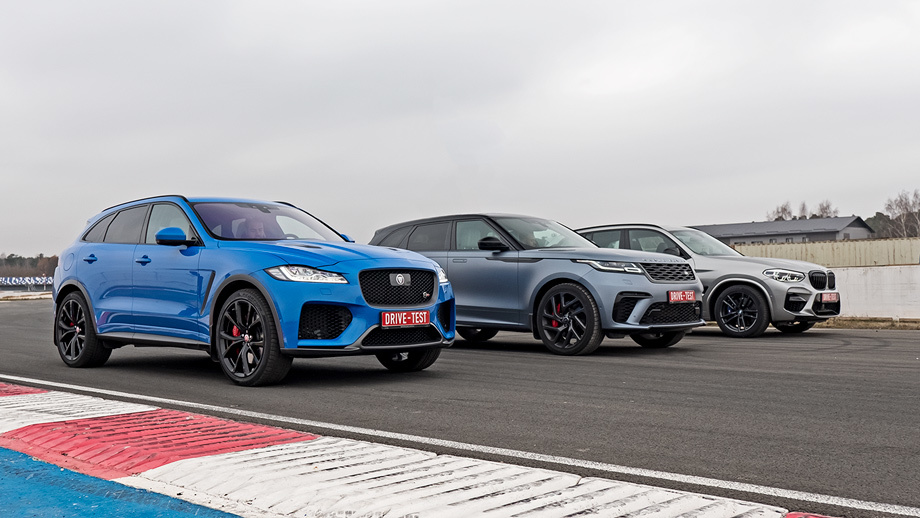
The gear ratio of the steering mechanisms for British crossovers is the same. The steering wheel both here and there makes a little more than two and a half turns between the extreme positions. Amplifiers are configured differently. The Jaguar steering wheel resists more actively, but the feedback is cleaner. It is easier to rotate the Velar one, although the drive already lacks transparency a bit. In addition, the Velar does not dive into turns, like Jag: at first it rolls, and when it turns into an arc a moment later, it may require correction.
By and large, in terms of trajectory movement at the limit of the hold, both “relatives” seem to be lubber compared to the BMW. In addition to transverse rolls, longitudinal ones are also annoyed — during acceleration and deceleration. For a soft Velar, pecks and attempts to rear up under full throttle are organic. Surprisingly, the hard F-Pace isn’t much better either. Jeep is jeep. Heavy V8’s are clearly not the best way to influence the weight distribution. The behavior of the cars is highly dependent on the dynamic redistribution of mass, and when iterating with the speed at the entrance to the turn, they, as a rule, plow to the outer curb.
In order to better feel the difference in the characters of the two co-platformers, you need to lower the degree to a dynamic city ride. Here we have two separate individuals. Velar, in principle, remains a kind of truck with a lifeless steering wheel and imposing suspension. Soft ride, wide seats, muffled exhaust so as not to disturb the silence in the cabin. And SVR, on the contrary, is gaining a sporting shape. In the metropolis, it is a sort of five-door XKR. Furious, sharply responding to the steering wheel and fuel supply, keeping the driver in good shape. It doesn’t even cling to asphalt and is ready to spin like a top at some interchange, especially if you carelessly handle gas.
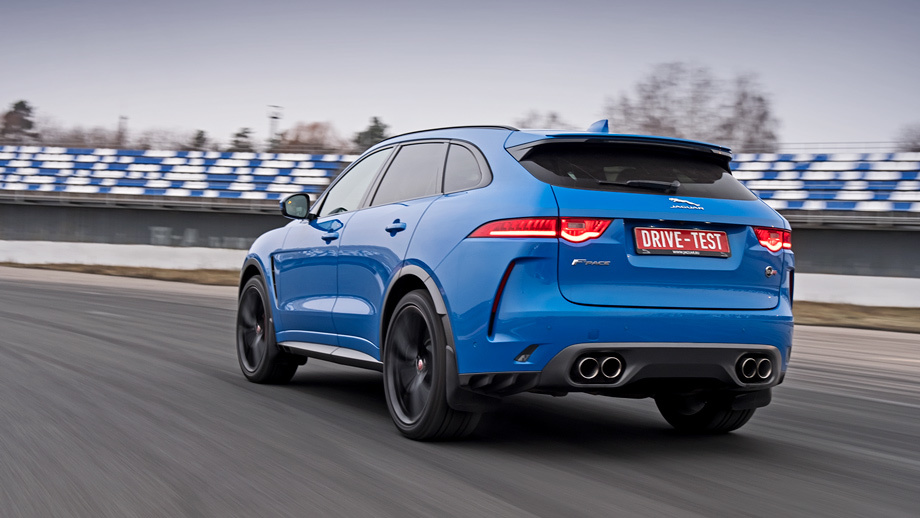
Winter tires of the “British” are matched by size. Jaguar is shod in the same Pirelli as X3 M, Velar is in Continental ContiCrossContact Winter. And it is the heavy Range that demonstrates the most effective deceleration. The best result is 129.9 feet when braking from 60 mph. Jaguar leaves somewhere 3.2 feet further. The shortest stopping distance for a BMW is 7.8 feet longer than the Velar one. Pulling any of the three cars, you notice a noticeable working stroke of the pedal. But only for the M this civil setting seems unnatural.
As for noise isolation, it is not bad in all three crossovers. Everywhere the main acoustic dominant is the sound of the engine. Or exhaust, if the dampers in the mufflers are open. With the increase in speed in British cars, the wind starts to blow before. Forward visibility even in a BMW is spoiled by massive A-pillars, and in the Jaguar and in the Range, this problem is aggravated by hacky wipers that leave a wide uncleaned strip near the left pillar.
Nevertheless, the dimensions are better felt in the Range, thanks to the high seating position. The chairs do not differ from those that are put on simpler modifications – and, oddly enough, these are the most comfortable seats in the test, they are easier to customize for yourself, they have the least questions. Viewed from behind the wheel, Velar resembles an impressive SUV, which makes the compact Range Rover related to adults. Even in the lowest position of the seat, the hood is clearly visible. But ergonomically, this is the most difficult car due to the abundance of touch panels.

The M after it seems like a passenger car, and the control of auxiliary functions is intuitive. The Jaguar is somewhere in between: it has more physical keys than the Velar. But the seat heating is still hidden in the jungle of multimedia, which does not start as quickly as we would like. Harsh bucket-like seats only promise a sporty fit, but in fact you sit noticeably higher than in the BMW.
Off-road, the Velar is predictably the most capable. Air suspension with ride height adjustment provides better geometric cross-country ability. The articulation of the axles is good, and the proprietary Terrain Response 2 system allows you to manage traction effectively. We do not go deeper, but the further we had to climb, the more profitable the Range Rover would look.
And the more noticeable difference would be between it and the Jaguar: SVR is deprived of off-road special modes and the ability to change ridiculous ground clearance. The body of the M is higher and, as long as the BMW geometry allows it, handles the road just as well as the Range thanks to the exemplary performance of the traction control, which skillfully imitates blocking.
Fortunately, among the test participants there is not a single car that requires cold calculation. All three cars are irrational, although the BMW is less so. The M outwardly is the modesty itself according to the standards of the segment. Only big brakes somehow hint to traffic light racers that it is better not to compete with this “X”. But in today’s company, technical excellence does not add points to the M. It is more efficient in extreme conditions, faster on a winding path and, perhaps, more convenient in everyday life — but more boring than any of the “British”. For such money, I want to smile more often.
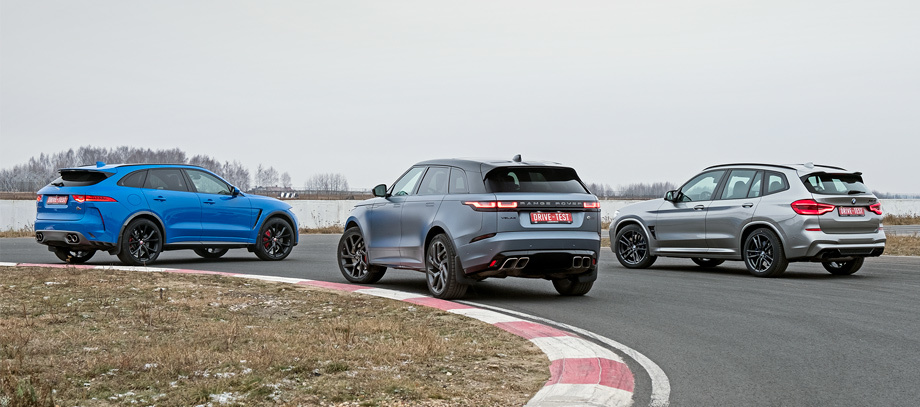
The loud SVR is the other extreme. Making a lot of noise, it lags behind the BMW. And the interior is categorically not worth the money that they ask for the Jaguar. The V8-powered Velar isn’t as loud and easier to imagine as a daily commuter than the SVR. At the same time, it’s more emotional than the BMW, a more American sport crossover option. It fits into life on a grand scale better than the precise and slightly cold X3 M. Of course, this is primarily Velar with a whole bunch of dubious decisions. But we are initially talking about the choice of the heart.
All our charismatics are eccentric, and among them the Range Rover seems to be the most versatile. I will say more: it is the “compressor” Velar that is the only one worthy of attention in the model line. It is clear that its cross-country ability will remain unclaimed, because it is necessary to climb somewhere, get dirty. But the pleasure of design and freaky motor does not require absolutely no effort. In short: this time you can safely buy the most expensive car.
This is a translation. You can read the original hre: https://www.drive.ru/test-drive/bmw/5de911a4ec05c4a07900000f.html

